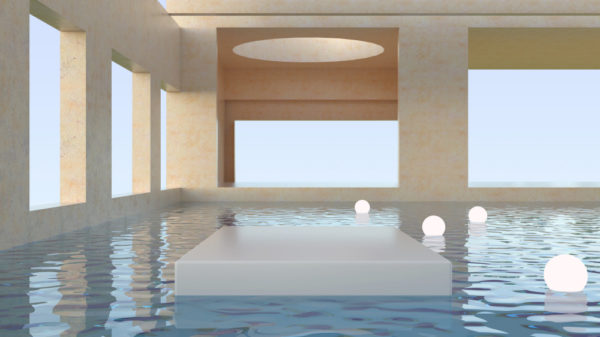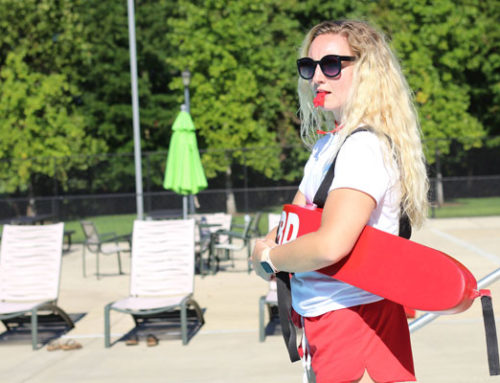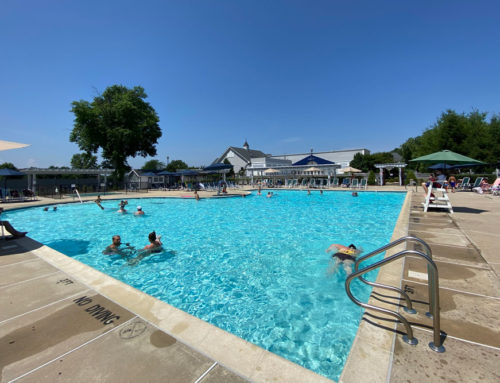
Renovation season begins in the fall and extends into the winter months. We like to plan out our remodels and maintenance schedules well in advance. This ensures your pool is ready for summer fun by Memorial Day. And if we learned anything from 2020, it’s that several changes will shape the aquatics industry in 2021.
It’s hard to imagine any industry that wasn’t somehow affected by COVID-19, let alone our own. Health codes will get tighter. Sanitation practices will remain stringent across the country.
Pool owners and operators face a double-edged sword. On one hand, they’ll need to commit more time and budget to pool sanitation. Many sanitation requirements will become hourly operational considerations.
On the other end, we witnessed massive advancements in digitally assisted service design. Web conferencing platforms like Zoom and Google Meet are so ubiquitous it’s practically underwhelming. No-contact food delivery and real-time service updates are an expectation, not a pleasant surprise.
But what exactly does this mean for the aquatics industry? If you’ve been paying attention the answer is: quite a lot.
COVID May Go Away, but Germ Awareness Won’t
Coronavirus mutations imply the potential for this disease to become endemic. That means that we may have to live with its variants in a similar fashion to the flu, possibly for a very long time.
Dr. Anthony Fauci himself has said that we may not return to “normal” until October or November 2021. That’s well after most Americans are expected to receive the vaccine. More important for us, that’s well after pool season for the vast majority of Americans.
Current scientific evidence supports chlorine’s ability to inactivate COVID-19. But there are several other Recreational Water Illnesses (RWIs) that are of much more concern in a swimming pool setting.
After being bombarded with news and reporting about infection, sanitation, hospitalizations, and more, our society is visibly entering a new era when the average person pays closer attention to their environment’s cleanliness. Although multiple studies conclude COVID-19 rarely spreads via surfaces, surface disinfectant sales are up 30% from 2019. This implication presents all the more reason for multifamily pool owners and operators to keep on top of sanitation best practices throughout this and future seasons.
Guests Demand Fewer Touchpoints
With more protocols in place to support social distancing and limit overcrowding in public areas, an accurate and sustainable headcount has neither been more important — nor easier — to enforce.
Innovation + time = expectation.
For example, could you think of using a QR code in 1994, when they were first invented? They were novel in 2009, when the first iPhone was released, but there weren’t many apps that supported the functionality. Now they’re everywhere and it’s a much more convenient way to, say, order from a contactless menu than typing a URL into your phone.
So, what does this all mean? Guests will expect an easy, contactless solution to check in and out of the pool. More organizations may opt for automatic sinks and soap dispensers. And while showers can’t be completely contactless, it’s not hard to imagine that more people will opt to wear sandals the next time they wash off.
Expect More Automation Across All Operations
Novel coronavirus isn’t the only reason to pay close attention to your water chemistry. Here are a few RWIs that proved to be much more dangerous in recent years when a swimming pool was improperly treated:
- Legionnaires’ Disease
- Cryptosporidium
- E. Coli
- Norovirus
- Giardia
- Shigella
The numbers aren’t pretty: 61% of swimming pool health code inspections identify at least one violation. Even more concerning, 12% of swimming pool health code inspections ID serious violations that end in a pool’s closure. Historical data aside, we can only expect health departments to become more alert and stringent as we further enter a “post-COVID” world.
It’s more critical than ever to ensure your aquatics facility receives the proper chemical treatment it depends on to stay open.
Swimming pool automation, or a “smart pool” system, is one of the most effective and modern ways to combat RWIs. It’s both easy to use and effective at what it does.
But pool automation can be difficult to implement on a commercial level. For one, there are comprehensive smart pool switches that can automate the entire pad — including lights, landscaping, and water features — as well as chemistry and pump monitoring. However, these switches are almost exclusive to residential aquatics.
When there are commercial automation options available, there hasn’t historically been an all-in-one solution. If you’re attempting to automate your entire system, the approach has been piecemeal and lacks uniformity. You may be able to automate your pump, but not your chemistry. Or you may be able to automate your chemical feeds, but not your pump circulation and backwash.
That is, unless you were to purchase each piece separately and cobble it together. In which case, the most viable option would be to buy each automation piece from the same manufacturer to ensure comprehensive communication between each unit. And sometimes, a manufacturer may not make the best product to satisfy each and every facet.
Introducing Aquatics Vision
When we built Aquatics Vision, it was because we noticed a big gap between how we, as professionals, expect pool automation to work, and how it actually does. It was also because we realized how important it was to develop comprehensive systems that optimize water quality and protect bathers from waterborne illness.
Aquatics Vision is the only smart pool program backed with 24/7 monitoring and emergency maintenance. And that’s why we’re so excited to share that program with you today. Here’s more of what you can expect from Aquatics Vision:
- Fully autonomous, continuously balanced and disinfected pool water
- Real-time control and monitoring pool systems including disinfectant & pH levels, pump pressure, water temperature, and more
- Complete and accurate historical chemistry data
- Compatible with your existing aquatics equipment
- Extends the lifespan of pumps and other expensive pool equipment
But let’s put all those features aside for a second. Because the truth is, current swimming pool automation solutions can’t be the solution themselves. That’s because even perfect, unified automation is only part of the solution. Rather than selecting between an automated or manual approach, we highly recommend a hybrid model.
A hybrid approach to pool maintenance is one that combines the ease-of-use and reliability of automation, while recognizing the need for regular manual maintenance and upkeep performed by a Certified Pool Operator. Unfortunately, there hasn’t been a true hybrid solution like this in the aquatics industry.
That is, until now.





